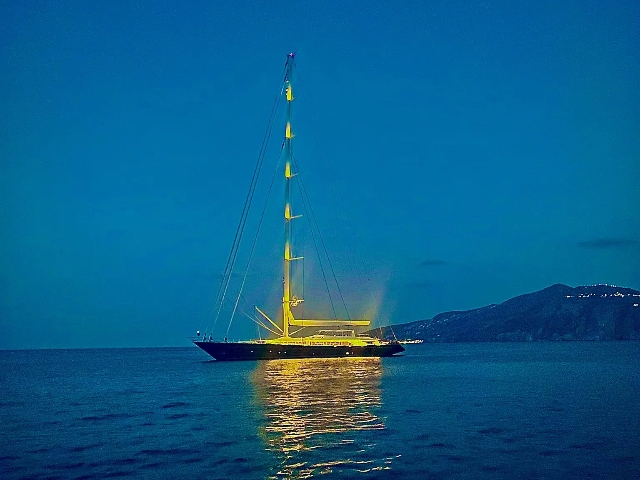[imagesource: X / @Khorakhane100]
The captain of the ill-fated Bayesian superyacht, which met its tragic end off the coast of Italy on Monday, revealed that neither the crew nor the passengers had the slightest inkling of the impending water-like tornado that would tear through the region—until it was too late, and the luxury vessel and passengers were swallowed by the sea.
Captain James Catfield, who piloted the 56-metre, British-flagged luxury yacht, was among the 15 crew members and passengers to survive after the tornado struck Monday just before sunrise, per NY Post.
One person, believed to be the chef, died, while six people including British tech tycoon Mike Lynch (who owned the yacht) and his 18-year-old daughter remain missing. Also among those still missing, is top New York City lawyer Christopher Morvillo and his wife Neda, along with Jonathan Bloomer, a chairman at Morgan Stanley International, and Bloomer’s wife, Judy.
They were all out celebrating Lynch’s acquittal from a fraud case (Morvillo helped Lynch win the trial earlier this year) – which makes the weird weather event all the more fishy.
Chilling CCTV footage shows the £30 million (R697 million) Bayesian superyacht being engulfed by the vicious storm that would sink it “in 60 seconds”, reported Daily Mail.
Search teams say the boat is stranded around 50 metres below the surface on the seabed and is so deep that dive teams can only go down for 10 minutes at a time, with their efforts being hampered by furniture blocking the entrances. There is the hope that the missing people are surviving on trapped pockets of air in the ship, which is especially possible if the boat sank on its side.
So what exactly happened?
The luxury sailboat was anchored just a few hundred metres off the coast of Porticello on calm seas when it was suddenly struck by a violent waterspout just before 5AM on Monday. The ship’s massive mast – one of the tallest in the world at an enormous 75-metre high – is part of what caused its speedy downfall when the rare weather phenomenon struck. The mast had snapped during the storm and keeled over, taking the hull beyond the ‘down-flooding angle’, according to nautical experts.
While authorities try to piece together exactly what happened, early indications suggest that abnormally high water temperatures in the Mediterranean likely led to the formation of a kind of ocean tornado called a waterspout that engulfed the ship. Watch a waterspout form over the Greek coast so you can get an idea of what this looked like:
Waterspouts are atmospheric phenomena that form ferocious columns of rotating air and mist above a body of water like the ocean.
“Generally speaking, a waterspout is a type of tornado that forms over water,” Jana Houser, an associate professor of meteorology at Ohio State University, told Newsweek.
“There are some differences between how a waterspout and a traditional tornado forms, but they’re in the same family.”
While many waterspouts are fleeting and mild, often dissipating in mere seconds with only moderate gusts, some can evolve into far more formidable and lasting forces. The intensity of these swirling vortices spans a spectrum—from barely perceptible ripples on the water to powerful, dangerous tempests bellowing at over 100 mph that leave chaos in their wake.
However, one maritime expert has said that the sinking of the boat was ‘unprecedented’ and that it was odd for a vessel the size of the Bayesian to go down. Matthew Schanck, Chairperson for the Maritime Search and Rescue Council, said the waterspout should not have been enough to cause the boat to sink.
He told GB News: ‘It’s sort of unprecedented, really, to have a vessel of that size, being certified and commercially operated, to suffer such a significant event in weather that was pretty severe by all accounts, but should have been within the limits of the vessel itself.’
Houser suggested that this might have been more akin to a traditional tornado, where the entire storm was in rotation, noting that “These types of events are often far more intense than a typical waterspout.”
“The effect is similar, but it’s technically not forming in the same way that a traditional waterspout would, and that’s probably why this was potentially so intense and destructive.”
With rising ocean temperatures largely being caused by climate change, the conditions that form waterspouts may become more frequent.





